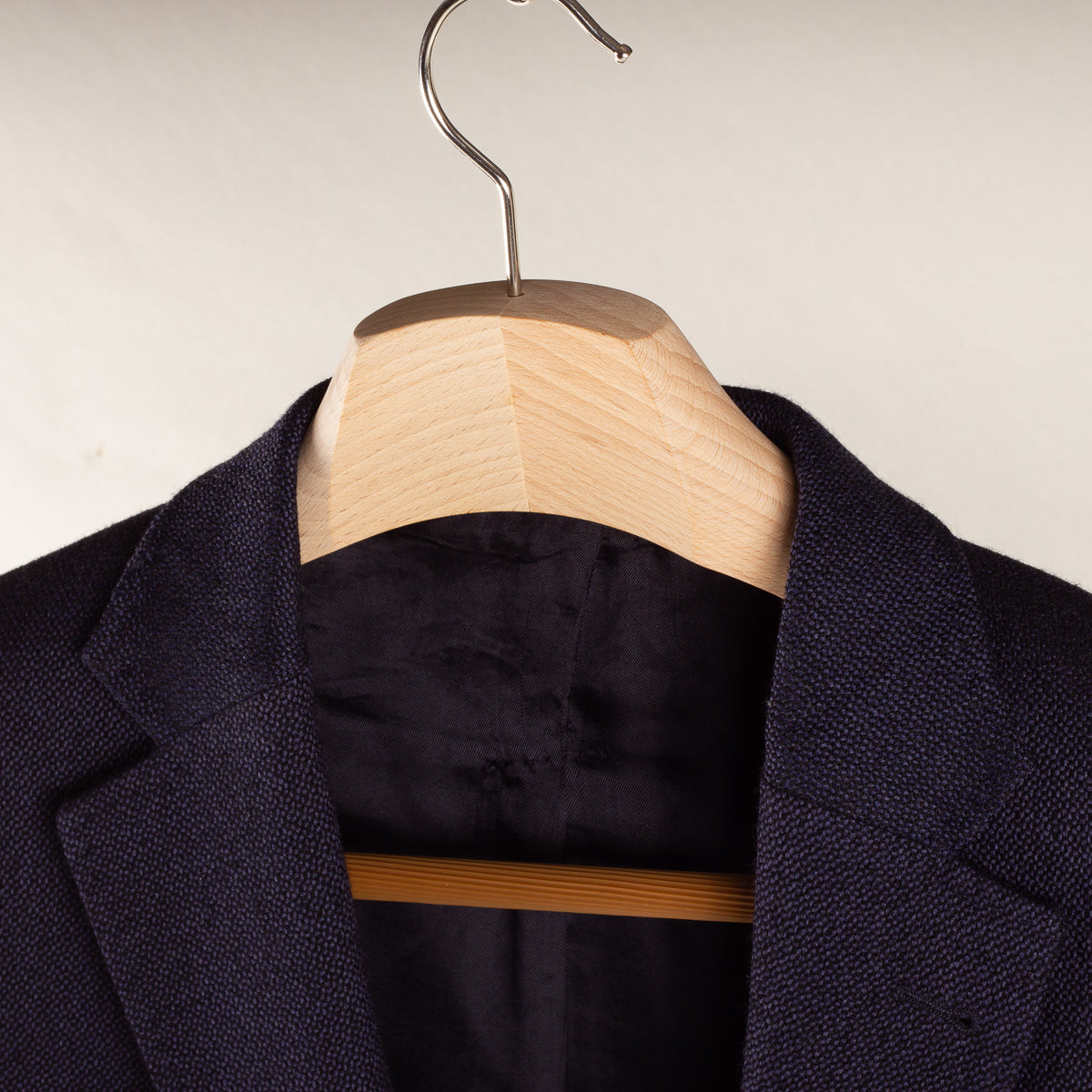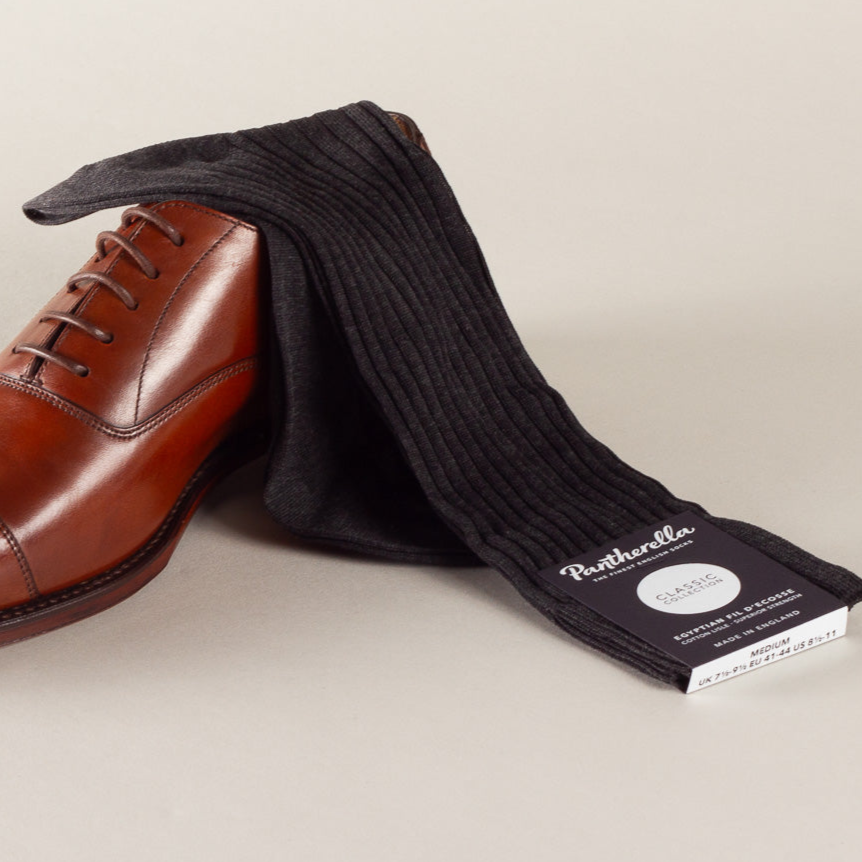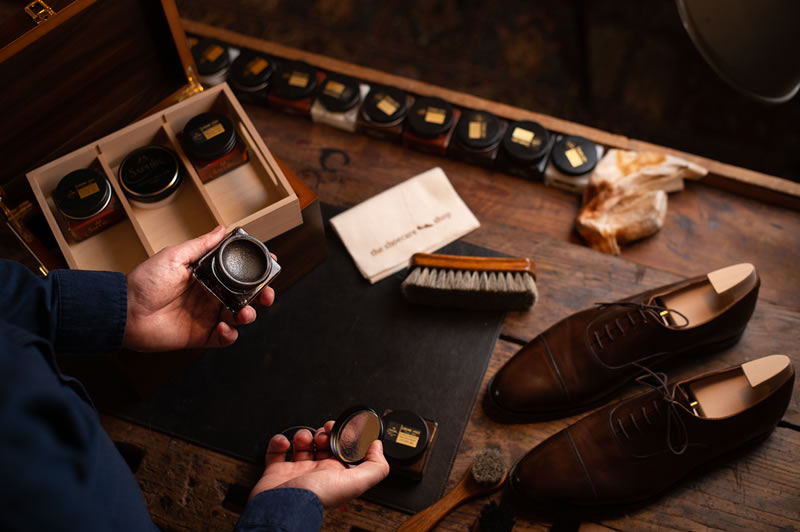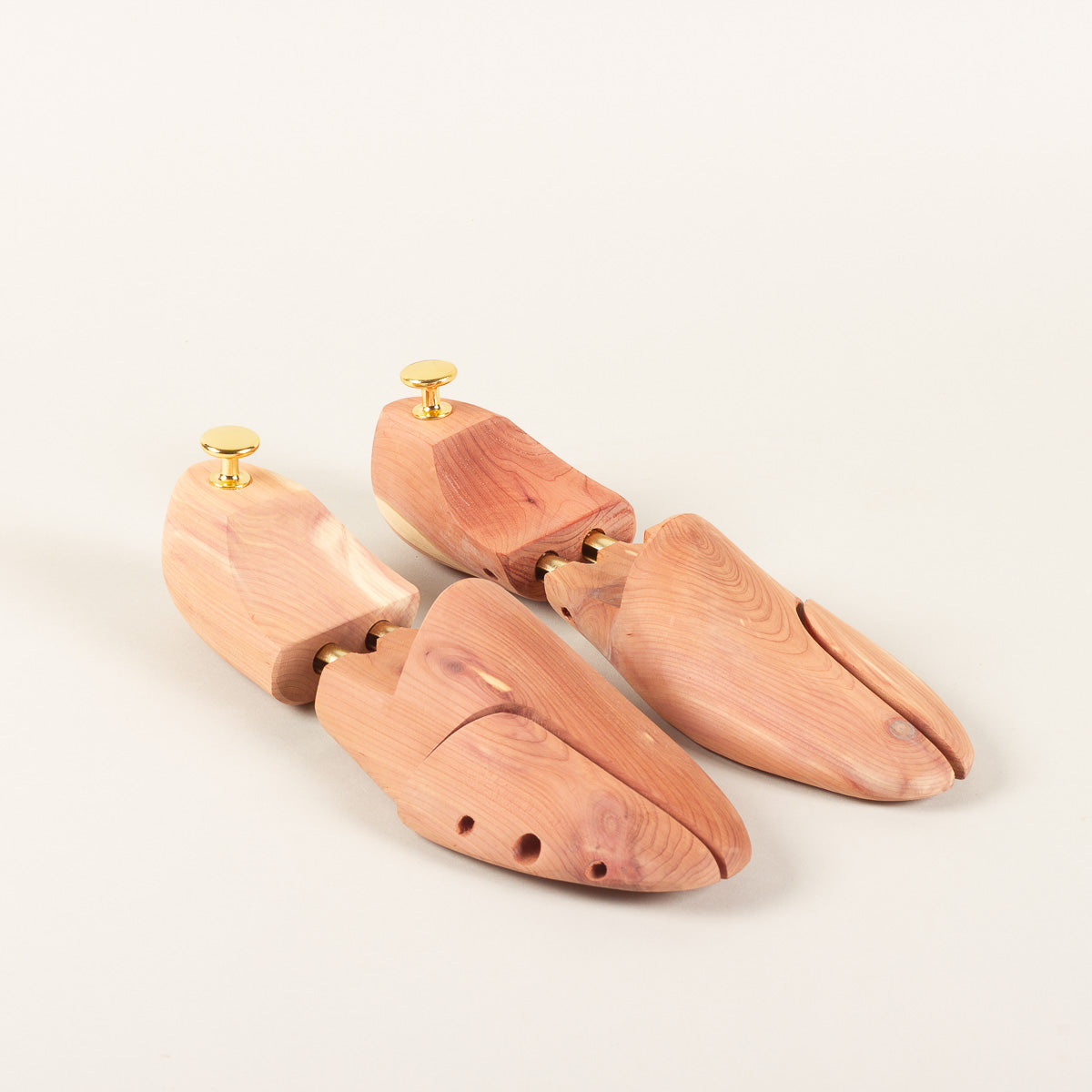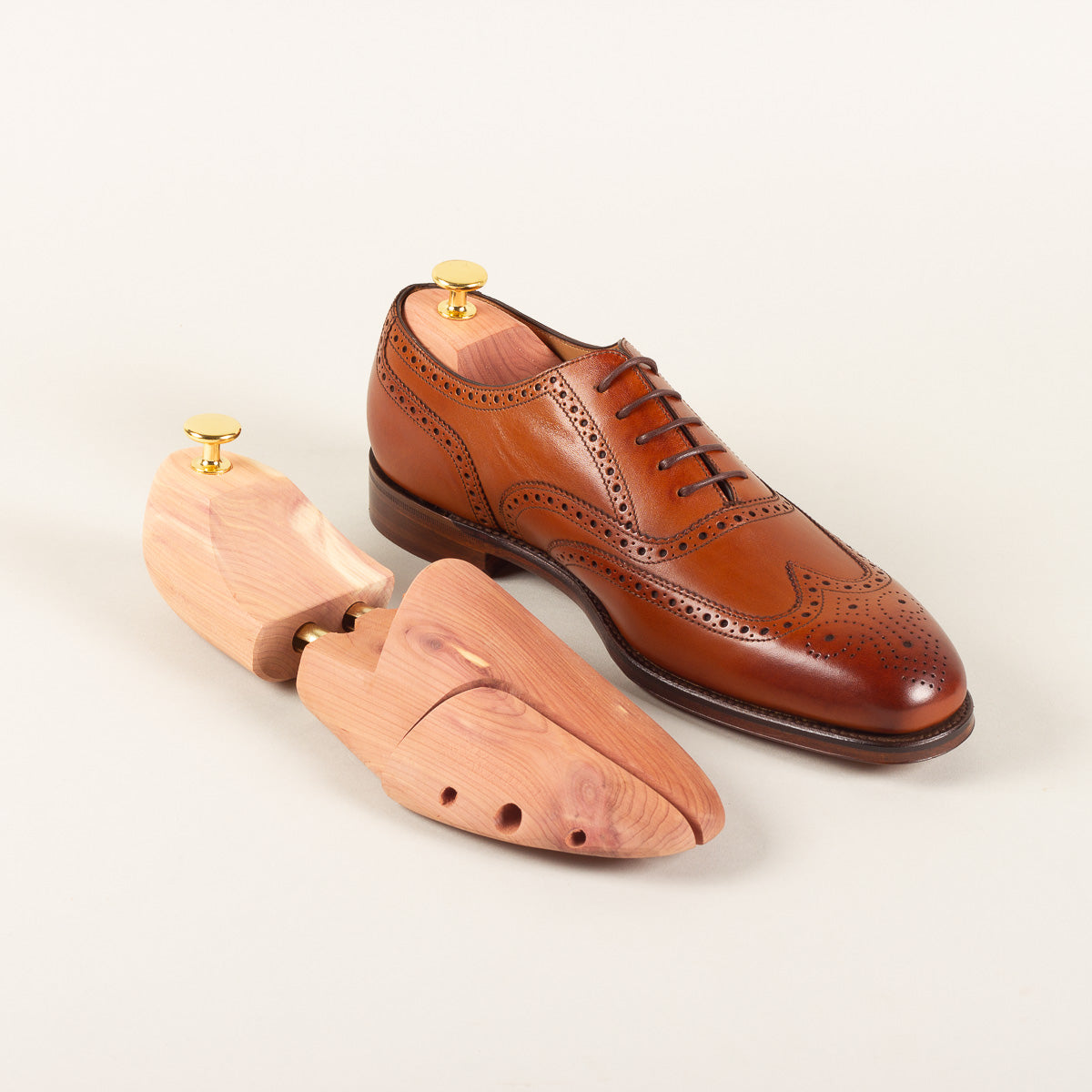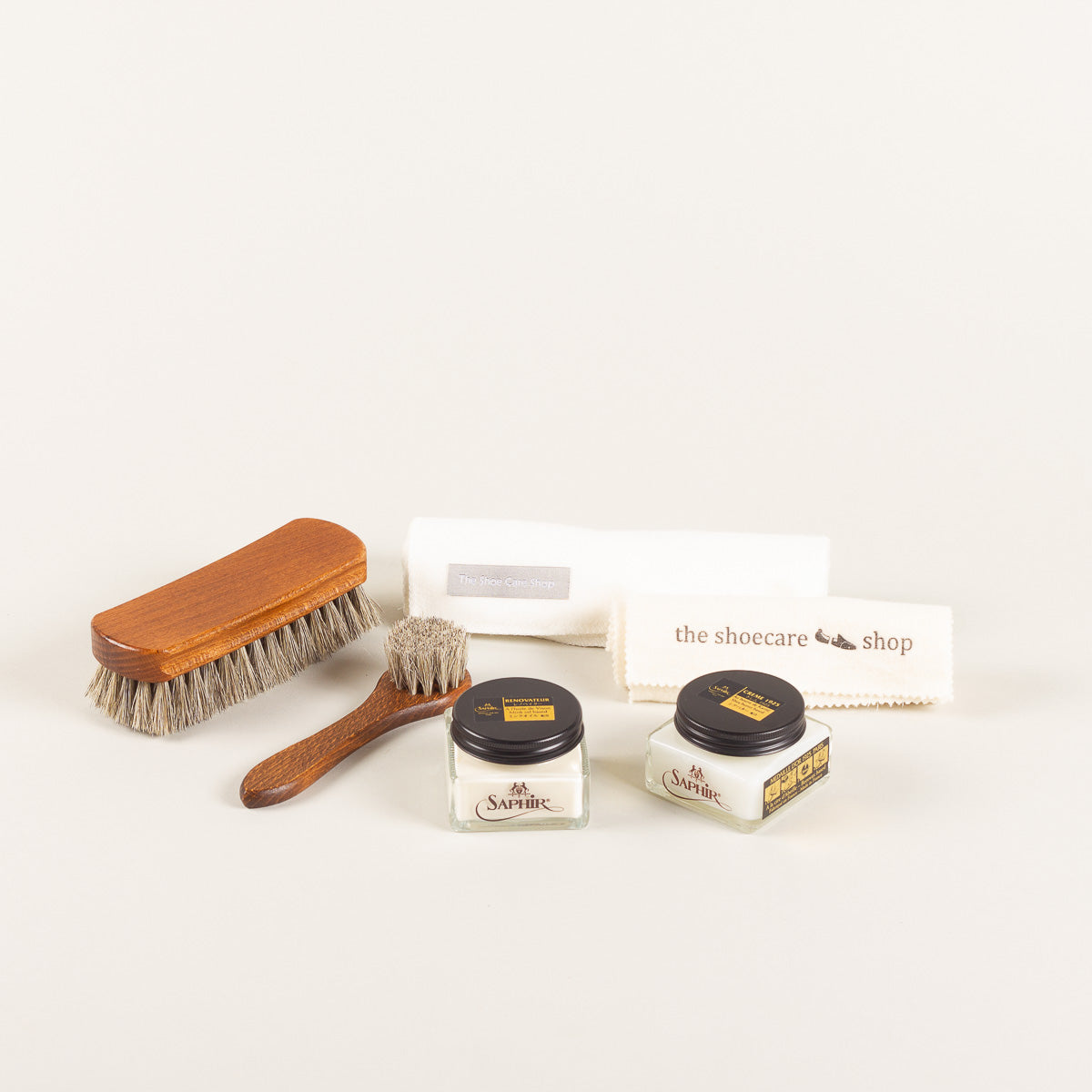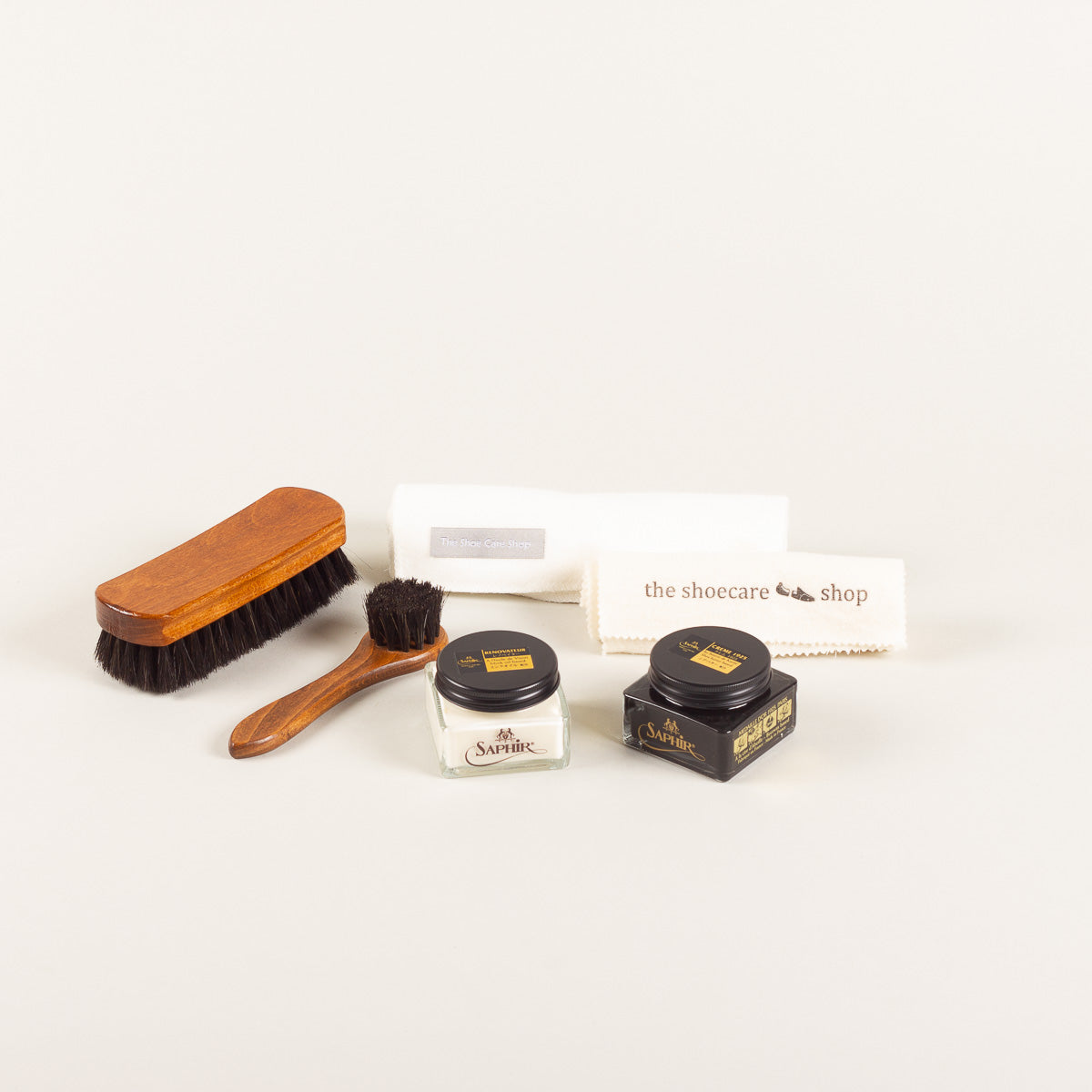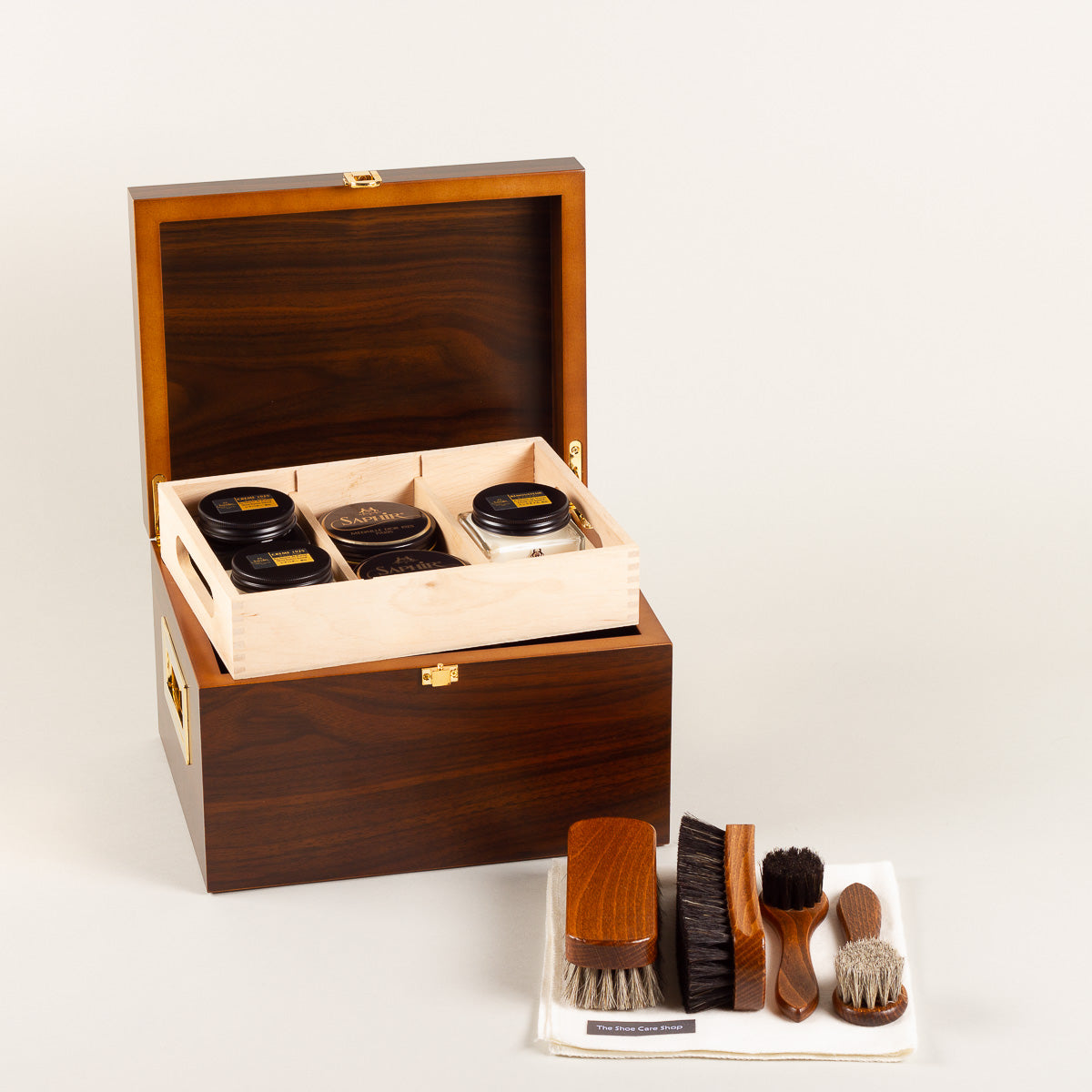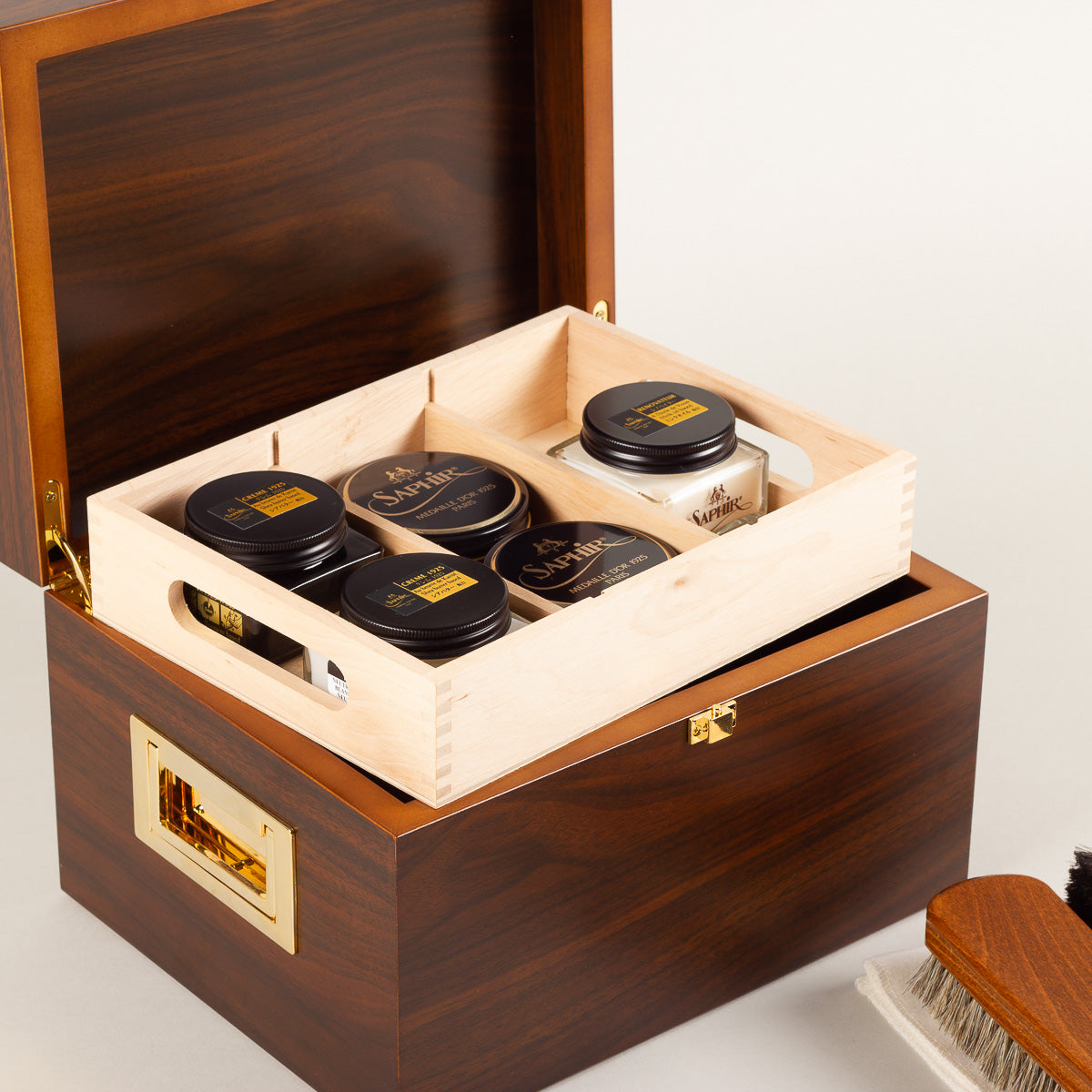When buying shoe polish, pay attention to the ingredients used in the product. Standard shoe polish, which you can often find at a supermarket, is often synthetic and contains silicones. Synthetic shoe polish, based on silicone, forms a protective layer over the leather. This layer of shoe polish seals completely, effectively closing off the leather. However, leather needs to breathe. Over time, the leather, because the moisture on the outside has nowhere to go (even with the use of cedar shoe trees), will deteriorate under the layer of shoe polish. Beeswax-based shoe polish or those with other (animal) oils, not only provides a protective layer but also penetrates the leather immediately. This way, the shoe polish protects the shoe from the inside out, ensuring the leather is optimally cared for and maintained. With this natural formula, leather stays beautiful for much longer.
What to Do If Your Shoes Already Have Synthetic Shoe Polish on Them? If your shoes are polished with synthetic shoe polish or you're unsure of what’s on them, remove the old layers. This can be done easily with Saphir Renomat. Instructions on how to do this can be found here. Once the shoes are cleaned, you can start fresh with good shoe polish, such as Saphir Crème Surfine or Pommadier from Saphir Médaille d'Or.
How to Know If Shoe Polish Contains Beeswax? If a shoe polish is beeswax-based, it will be indicated on the packaging. This is one of the distinguishing features compared to 'standard' shoe polish.


